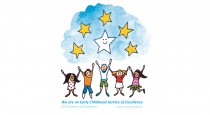So what is Te Whāriki?
So what is Te Whāriki?
Early Childhood Education
Te Whāriki is the name of the Early Childhood Curriculum in Aotearoa. It is a Government policy document and describes aspirations for children in Early Childhood Education as follows:
to grow up as competent and confident learners and communicators, healthy in mind, body, and spirit, secure in their sense of belonging and in the knowledge that they make a valued contribution to society.
While the curriculum does not tell us exactly what to teach, it does define how to achieve progress towards this vision for learners in early childhood centres. Its starting point is the individual learner and the knowledge, skills, and attitudes that the child brings to their experiences.
Each community to which a child belongs, whether it is a family home or an early childhood setting outside the home, provides opportunities for new learning to be fostered: for children to reflect on alternative ways of doing things; make connections across time and place; establish different kinds of relationship; and encounter different points of view. These experiences enrich children’s lives and provide them with the knowledge, skills, and dispositions they need to tackle new challenges.
Te Whāriki emphasises the critical role of socially and culturally mediated learning and of reciprocal and responsive relationships for children with people, places, and things. Children learn through collaboration with adults and peers, through guided participation and observation of others, as well as through individual exploration and reflection.
In early childhood education settings, all children should be given the opportunity to develop knowledge and an understanding of the cultural heritages of both partners to Te Tiriti o Waitangi. The curriculum reflects this partnership.
Check it out by clicking HERE.







